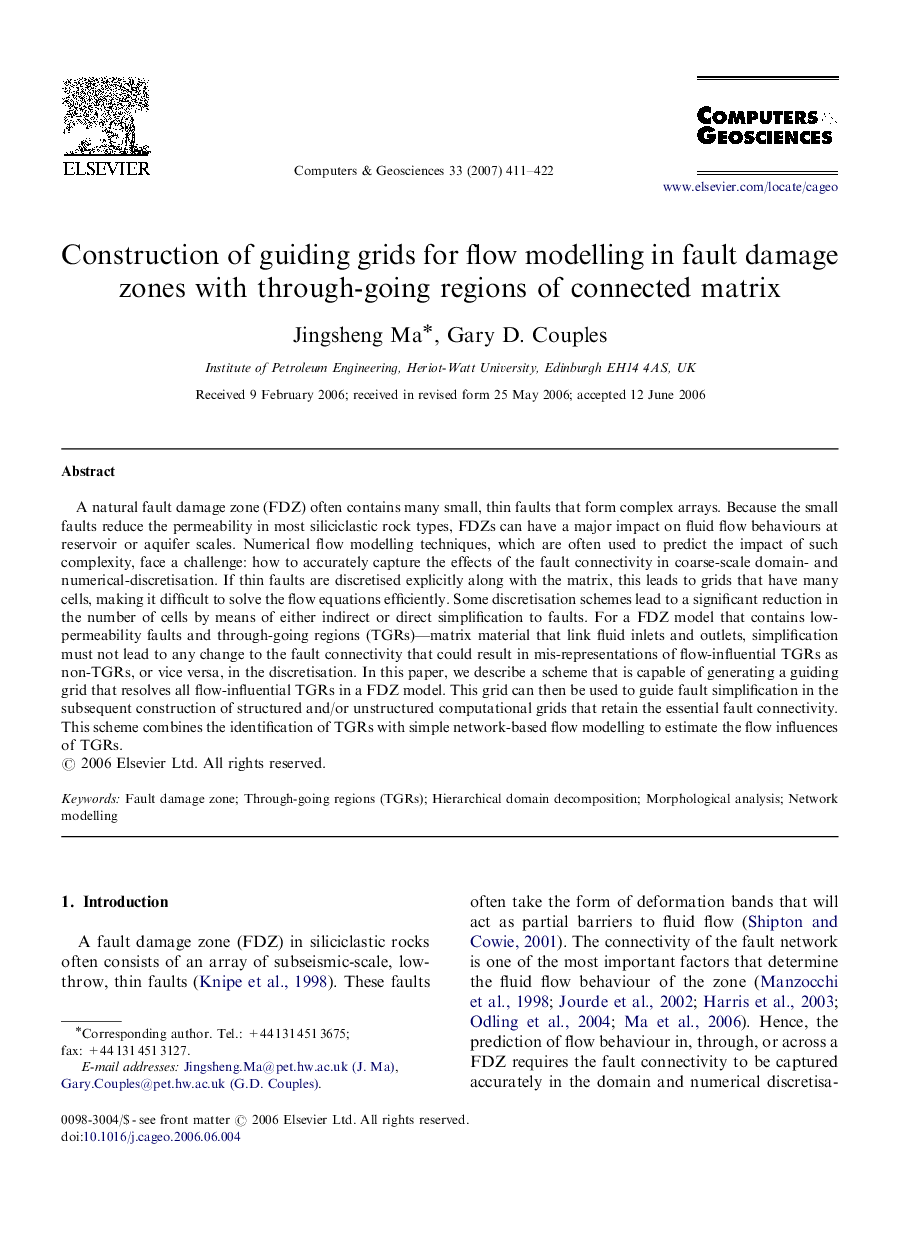| Article ID | Journal | Published Year | Pages | File Type |
|---|---|---|---|---|
| 508244 | Computers & Geosciences | 2007 | 12 Pages |
A natural fault damage zone (FDZ) often contains many small, thin faults that form complex arrays. Because the small faults reduce the permeability in most siliciclastic rock types, FDZs can have a major impact on fluid flow behaviours at reservoir or aquifer scales. Numerical flow modelling techniques, which are often used to predict the impact of such complexity, face a challenge: how to accurately capture the effects of the fault connectivity in coarse-scale domain- and numerical-discretisation. If thin faults are discretised explicitly along with the matrix, this leads to grids that have many cells, making it difficult to solve the flow equations efficiently. Some discretisation schemes lead to a significant reduction in the number of cells by means of either indirect or direct simplification to faults. For a FDZ model that contains low-permeability faults and through-going regions (TGRs)—matrix material that link fluid inlets and outlets, simplification must not lead to any change to the fault connectivity that could result in mis-representations of flow-influential TGRs as non-TGRs, or vice versa, in the discretisation. In this paper, we describe a scheme that is capable of generating a guiding grid that resolves all flow-influential TGRs in a FDZ model. This grid can then be used to guide fault simplification in the subsequent construction of structured and/or unstructured computational grids that retain the essential fault connectivity. This scheme combines the identification of TGRs with simple network-based flow modelling to estimate the flow influences of TGRs.
